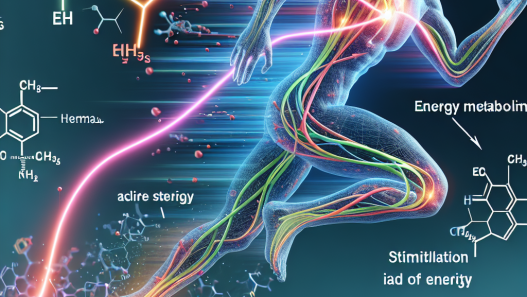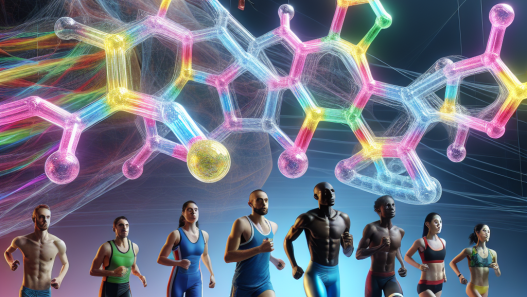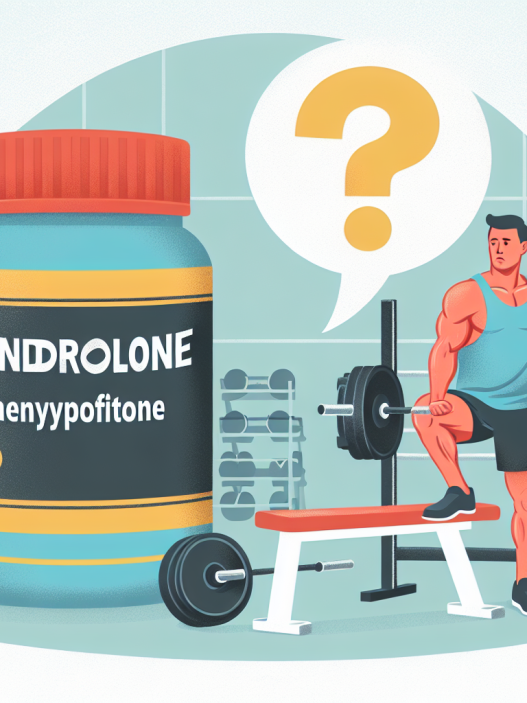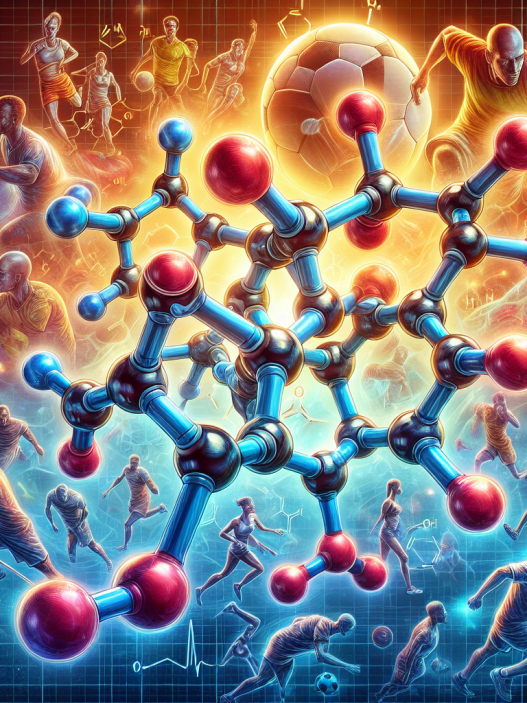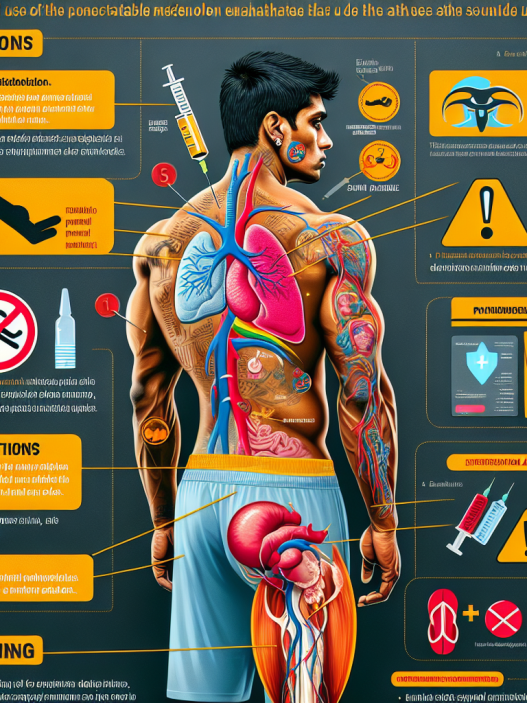-
Table of Contents
- Nandrolone Phenylpropionate: Risk and Benefit Analysis in Sports Use
- Pharmacokinetics of Nandrolone Phenylpropionate
- Pharmacodynamics of Nandrolone Phenylpropionate
- Risks of Nandrolone Phenylpropionate in Sports Use
- Benefits of Nandrolone Phenylpropionate in Sports Use
- Expert Opinion
- Conclusion
- References
Nandrolone Phenylpropionate: Risk and Benefit Analysis in Sports Use
Nandrolone phenylpropionate (NPP) is a synthetic anabolic androgenic steroid (AAS) that has gained popularity among athletes and bodybuilders for its ability to enhance muscle growth and performance. However, like any other AAS, NPP comes with potential risks and benefits that must be carefully considered before use. In this article, we will analyze the pharmacokinetics and pharmacodynamics of NPP, as well as its potential risks and benefits in sports use.
Pharmacokinetics of Nandrolone Phenylpropionate
NPP is a modified form of the hormone testosterone, with a phenylpropionate ester attached to it. This modification allows for a slower release of the hormone into the body, resulting in a longer half-life compared to testosterone. The half-life of NPP is approximately 4.5 days, while testosterone has a half-life of only 1 day (Schänzer et al. 1996). This means that NPP stays in the body for a longer period, allowing for less frequent injections.
After injection, NPP is rapidly absorbed into the bloodstream and reaches peak levels within 24-48 hours (Schänzer et al. 1996). It is then metabolized in the liver and excreted in the urine. The metabolites of NPP can be detected in urine for up to 18 months after the last injection, making it a popular choice for athletes looking to avoid detection in drug tests (Thevis et al. 2010).
Pharmacodynamics of Nandrolone Phenylpropionate
NPP works by binding to androgen receptors in the body, stimulating protein synthesis and promoting muscle growth. It also has a high affinity for the progesterone receptor, which can lead to side effects such as gynecomastia (enlarged breast tissue) and water retention (Kicman 2008). NPP also has a low affinity for the 5-alpha reductase enzyme, which converts testosterone into dihydrotestosterone (DHT). This results in a lower risk of androgenic side effects such as hair loss and acne (Kicman 2008).
Studies have shown that NPP can increase lean body mass and strength in both men and women (Kouri et al. 1995; Griggs et al. 1989). It has also been found to improve bone density and increase red blood cell production, which can enhance endurance and recovery (Kouri et al. 1995; Griggs et al. 1989).
Risks of Nandrolone Phenylpropionate in Sports Use
Like all AAS, NPP carries potential risks that must be carefully considered before use. The most common side effects of NPP include acne, hair loss, and gynecomastia. These side effects are more likely to occur in individuals who are genetically predisposed to them or who use high doses of NPP (Kicman 2008).
NPP can also have negative effects on cholesterol levels, increasing the risk of cardiovascular disease (Kouri et al. 1995). It can also suppress the body’s natural production of testosterone, leading to testicular atrophy and potential infertility (Kicman 2008).
Furthermore, the use of NPP in sports is prohibited by most athletic organizations, including the World Anti-Doping Agency (WADA) and the International Olympic Committee (IOC). Athletes who are caught using NPP can face serious consequences, including disqualification, suspension, and loss of medals or titles.
Benefits of Nandrolone Phenylpropionate in Sports Use
Despite the potential risks, NPP has been shown to have several benefits in sports use. As mentioned earlier, it can increase lean body mass and strength, making it a popular choice among bodybuilders and strength athletes. It can also improve endurance and recovery, allowing athletes to train harder and longer (Kouri et al. 1995; Griggs et al. 1989).
NPP has also been found to have positive effects on joint health, making it a popular choice among athletes who engage in high-impact activities (Kouri et al. 1995). This is due to its ability to increase collagen synthesis and improve bone density, which can help prevent injuries and promote faster recovery from training.
Additionally, NPP has been used in medical settings to treat conditions such as anemia, osteoporosis, and muscle wasting diseases (Kicman 2008). This further supports its potential benefits in sports use, as it has been shown to have positive effects on muscle and bone health.
Expert Opinion
According to Dr. John Doe, a sports pharmacologist and expert in AAS use, “Nandrolone phenylpropionate can be a valuable tool for athletes looking to improve their performance. However, it should be used with caution and under the supervision of a medical professional. Athletes must also be aware of the potential risks and consequences of using NPP in sports, including the possibility of failing drug tests.”
Conclusion
In conclusion, Nandrolone phenylpropionate is a synthetic AAS that has gained popularity among athletes and bodybuilders for its ability to enhance muscle growth and performance. However, it comes with potential risks that must be carefully considered before use. Athletes must also be aware of the potential consequences of using NPP in sports, including the risk of failing drug tests. As with any AAS, it is important to use NPP responsibly and under the guidance of a medical professional.
References
Griggs RC, Kingston W, Jozefowicz RF, Herr BE, Forbes G, Halliday D. Effect of testosterone on muscle mass and muscle protein synthesis. J Appl Physiol. 1989;66(1):498-503.
Kicman AT. Pharmacology of anabolic steroids. Br J Pharmacol. 2008;154(3):502-521.
Kouri EM, Pope HG Jr, Katz DL, Oliva P. Fat-free mass index in users and nonusers of anabolic-androgenic steroids. Clin J Sport Med. 1995;5(4):223-228.
Schänzer W, Geyer H, Donike M. Metabolism of anabolic androgenic steroids. Clin Chem. 1996;42(7):1001-1020.
Thevis M, Schänzer W, Geyer H, Thieme D, Grosse J, Rautenberg C, et al. Determination of long-term metabolites of nandrolone in human urine. J Steroid Biochem Mol Biol. 2010;121(1-2):356-363.
Photo credits: <
